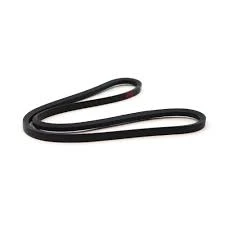- Arabic
- French
- Russian
- Spanish
- Portuguese
- Turkish
- Armenian
- English
- Albanian
- Amharic
- Azerbaijani
- Basque
- Belarusian
- Bengali
- Bosnian
- Bulgarian
- Catalan
- Cebuano
- Corsican
- Croatian
- Czech
- Danish
- Dutch
- Afrikaans
- Esperanto
- Estonian
- Finnish
- Frisian
- Galician
- Georgian
- German
- Greek
- Gujarati
- Haitian Creole
- hausa
- hawaiian
- Hebrew
- Hindi
- Miao
- Hungarian
- Icelandic
- igbo
- Indonesian
- irish
- Italian
- Japanese
- Javanese
- Kannada
- kazakh
- Khmer
- Rwandese
- Korean
- Kurdish
- Kyrgyz
- Lao
- Latin
- Latvian
- Lithuanian
- Luxembourgish
- Macedonian
- Malgashi
- Malay
- Malayalam
- Maltese
- Maori
- Marathi
- Mongolian
- Myanmar
- Nepali
- Norwegian
- Norwegian
- Occitan
- Pashto
- Persian
- Polish
- Punjabi
- Romanian
- Samoan
- Scottish Gaelic
- Serbian
- Sesotho
- Shona
- Sindhi
- Sinhala
- Slovak
- Slovenian
- Somali
- Sundanese
- Swahili
- Swedish
- Tagalog
- Tajik
- Tamil
- Tatar
- Telugu
- Thai
- Turkmen
- Ukrainian
- Urdu
- Uighur
- Uzbek
- Vietnamese
- Welsh
- Bantu
- Yiddish
- Yoruba
- Zulu
okt . 06, 2024 06:38 Back to list
synchronous belt
Understanding Synchronous Belts A Key Component in Mechanical Systems
Synchronous belts are essential components widely used in various mechanical systems for power transmission. Unlike traditional V-belts, which rely on friction to transfer motion, synchronous belts use teeth that mesh with corresponding grooves on pulleys. This design ensures a positive engagement, eliminating slippage and allowing for precise timing and synchronization. This article will explore the construction, applications, advantages, and maintenance of synchronous belts.
Construction of Synchronous Belts
Synchronous belts are typically made from high-strength polymers reinforced with fibers such as fiberglass or steel, which enhance their tensile strength and durability. The surface of these belts is characterized by longitudinal teeth that fit into the grooves of the pulleys they work with. The precise spacing between these teeth, or the pitch, is critical as it determines the belt's ability to engage smoothly with the pulleys and maintain accurate timing.
Belts come in different profiles and sizes to accommodate various applications. Common profiles include 5mm, 8mm, 14mm, and 20mm pitch belts, with a variety of widths to suit the specific load and driving requirements. The choice of belt depends on factors such as the required torque, speed, and the type of materials being conveyed.
Applications of Synchronous Belts
Synchronous belts are utilized across numerous industries, including automotive, manufacturing, and robotics. In automotive applications, they are often found in timing systems, where they synchronize the rotation between the crankshaft and camshaft, ensuring that the engine's valves open and close at the correct times. This synchronization is vital for optimal engine performance and efficiency.
In manufacturing, synchronous belts drive machinery that requires precise motion control, such as conveyor systems, CNC machines, and assembly equipment. They enable accurate positioning of components and help maintain the rhythm of assembly lines, enhancing productivity and reducing the risk of errors.
The robotics industry also heavily relies on synchronous belts for actuator systems and linear motion applications. Using these belts allows for the precise control of robotic arms, ensuring repeatability and accuracy in various tasks, including assembly, welding, and painting.
synchronous belt

Advantages of Synchronous Belts
One of the primary advantages of synchronous belts is their high efficiency. Since they do not slip, they can transmit power with minimal loss, which leads to better energy utilization. This efficiency translates to lower operational costs, reduced energy consumption, and extended component life.
Another significant benefit is their low maintenance requirements. Unlike V-belts that require periodic tension adjustments, synchronous belts maintain their tension due to their toothed design. This feature minimizes the need for frequent inspections and replacements, making them a cost-effective choice for continuous operations.
Moreover, the ability to operate quietly is a hallmark of synchronous belts. The positive engagement of teeth with the pulleys reduces noise levels, contributing to a quieter work environment – a crucial aspect in industries where noise control is essential.
Maintenance and Care
While synchronous belts are relatively low maintenance, routine inspections are still necessary to ensure optimal performance. Key areas to monitor include wear and tear of the teeth, alignment of the pulleys, and any signs of fraying or damage. Regularly checking tension is also important, particularly in new installations, to ensure that the system runs smoothly.
When replacing a synchronous belt, it is essential to use the correct specifications to avoid compatibility issues. Following the manufacturer's guidelines for installation and maintenance will help maximize the lifespan and efficiency of the belt.
Conclusion
Synchronous belts are a vital component of contemporary mechanical systems, offering a blend of efficiency, durability, and precision. Their unique design enables reliable power transmission while minimizing maintenance and operational costs. As technology continues to advance, the role of synchronous belts is expected to expand further, underscoring their importance in modern engineering applications. Whether in automotive engines, manufacturing lines, or robotics, synchronous belts ensure that machines work harmoniously, paving the way for innovation and efficiency in various industries.
-
Korean Auto Parts Timing Belt 24312-37500 For Hyundai/Kia
NewsMar.07,2025
-
7PK2300 90916-T2024 RIBBED BELT POLY V BELT PK BELT
NewsMar.07,2025
-
Chinese Auto Belt Factory 310-2M-22 For BMW/Mercedes-Benz
NewsMar.07,2025
-
Chinese Auto Belt Factory 310-2M-22 For BMW/Mercedes-Benz
NewsMar.07,2025
-
90916-02660 PK Belt 6PK1680 For Toyota
NewsMar.07,2025
-
drive belt serpentine belt
NewsMar.07,2025

